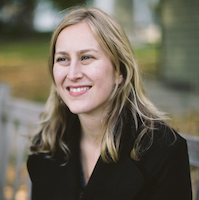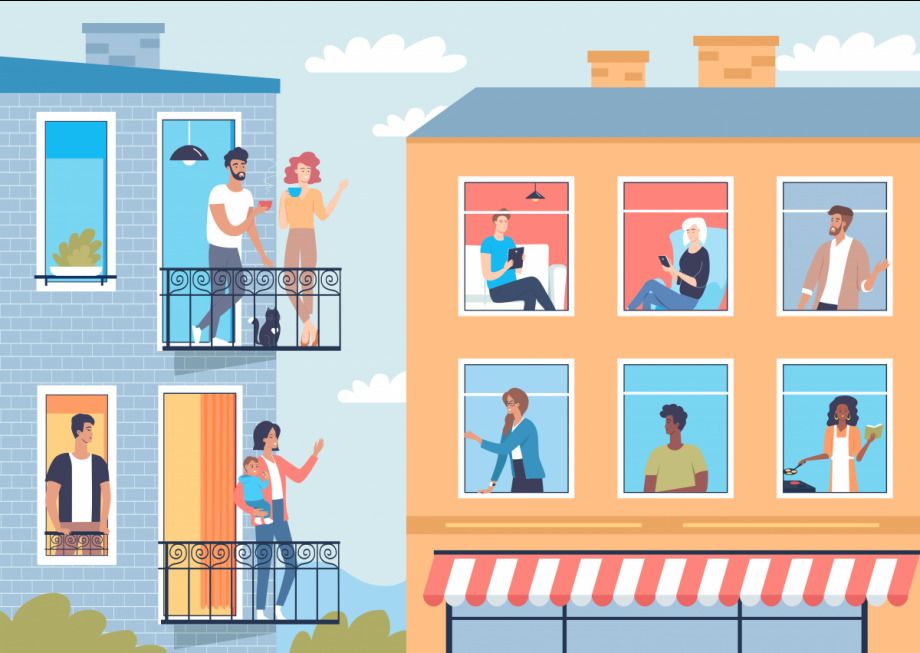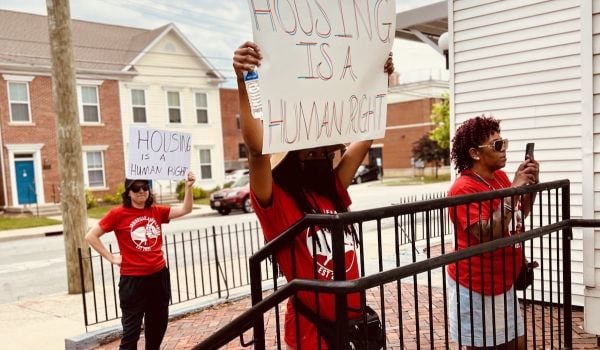EDITOR’S NOTE: The following is an excerpt of the book “Brave New Home: Our Future in Smarter, Simpler, Happier Housing,” by Diana Lind, published by Bold Type Books. In it, Lind (the former Executive Director of Next City, and a current board member) explores how single-family houses are detrimental to society as well as the planet, and she highlights healthier, more affordable and environmentally friendly solutions that help to nullify the loneliness that sometimes comes from living alone. If you’d like a copy of “Brave New Home,” it’s one of Next City’s thank you gifts for our year-end fundraising drive. Please consider donating $60 or more to get a copy.
The Kensington neighborhood of Philadelphia has the ignominious reputation of being the epicenter of the city’s opioid crisis. Once a hub of manufacturing with working-class residents, today Kensington struggles with a 60 percent poverty rate and high rates of violence, unemployment, and drug use. Many entities — from local government to community-development organizations, public schools to universities — are fighting alongside residents for a better future. One such organization is Shift Capital, a social-impact-driven real estate development company that has made a name for itself by renovating more than 260,000 square feet in a former textile complex to serve as studio space for artists and entrepreneurs. As part of its investment in the neighborhood, Shift also owns about one hundred homes across Kensington.
Despite all of Kensington’s drawbacks, the area stands to become gentrified in the next decade. It’s just blocks from Fishtown and Port Richmond, areas that have seen scores of new developments. Shift is hoping to steer Kensington to a future as a mixed-income neighborhood with less intergenerational poverty, using real estate as a lever to restore safety and vitality, and as a hedge against displacement. For Shift’s vision to succeed, maintaining a good relationship with tenants, and understanding their needs, is going to be critical.
Shift’s cofounder, Brian Murray, describes himself as “a community-development person at heart,” which he says comes with “a mindset of how real estate touches people’s lives.” Most renters think of their landlord as a distant or abstract entity; Murray sees the landlord-tenant relationship as something far-reaching. “I’ve always viewed the property management world as an untapped delivery system,” he says. Developers selling new housing aren’t incentivized to provide healthier homes unless it’s part of the market demand. But for landlords, the relationship with residents continues after the lease is signed. Landlords also have the opportunity to deliver services to their tenants beyond typical appliance repairs or utilities. Shift already serves as a conduit for education, alerting tenants to job fairs and other opportunities, and provides some basic safety tools, like security cameras. But Murray wanted to do more.
In 2019, Murray was approached by entrepreneur Matt Hoffman, who had recently launched a social impact fund called HousingTech Ventures. Hoffman proposed a program called HEALTH+, which would give tenants in Shift Capital’s one hundred properties access to telemedicine and low-cost prescriptions. Telemedicine offers a convenient healthcare option for people seeking to avoid the hassles of booking appointments in advance or even the time spent in a waiting room. And in the age of the COVID-19 pandemic, telemedicine has become a critical way for people to get medical care without risking infection in a hospital or doctor’s office. At $10 per month, the service costs about as much as two adults taking a bus to the doctor’s office and back. But the real advantage is that telemedicine can be far more convenient and quicker for patients than a visit to an urgent care clinic.
Shift’s renters are entirely low-income. A good chunk are single mothers with children, getting by month to month. For many, a trip to the doctor means missing work, which may mean missing out on pay or even facing penalties for calling in sick. Many more may never take themselves or their sick children to the doctor simply because there’s no time for it in their schedule. Imagining the time and money that tenants could potentially save by enrolling in the program, Murray felt it was a no-brainer to offer it.
Murray is motivated by the notion that this is a meaningful amenity to his renters and something that will keep his tenants loyal. But there may also be a business case for keeping his renters healthy. For many people, just one sickness can become a slew of cascading consequences. Being sick can lead to missed work, which leads to missed rent, which leads to eviction, which leads to any number of bad outcomes. If Murray’s renters stay healthy, employed, and in their homes, he may be less likely to have to deal with turnover, which affects his bottom line.
Murray admits it’s a pretty weak business case, at least until there are data to prove that the telemedicine service has a measurable impact on tenant stability (something he plans to study over the next few years). Murray isn’t sure how many people will sign up, what the usage will be like, or if his hunch that this program can help people withstand other difficulties in life will pan out. But he does know that in a neighborhood like Kensington, it is a small step toward keeping people healthy. He hopes other landlords will consider how they can affect their tenants’ lives for the better. “My dream is that this inspires others to do it,” Murray says.
Landlords and developers are now beginning to think about providing health care as an amenity in the same way they once thought about providing cable or a cleaning service. While a simple telemedicine program like HEALTH+ is the most basic way to integrate health into housing, other developers are going much deeper. Some developers come from a unique vantage point: they’re health insurance companies or healthcare institutions like hospitals. They have a window into health needs and solutions that the typical residential developer lacks, and are using that insight to tackle the hard problems of homelessness and other acute health conditions. Others are coming to wellness by sourcing the needs and wants of their clientele and looking at how to provide a housing experience that supports healthy living.
Like co-living and multigenerational residences, health-driven housing is not an entirely new trend. After all, single-family homes were originally touted as an escape from the crowded, unsanitary tenements, and as a way to ensure children access to nature, play space, and a private family life (all of which were seen as critical to physical and mental health). But while this style of housing may have had benefits over shared living in the late nineteenth and early twentieth centuries, today those who live in single-family homes in the suburbs are no better off than their peers in cities.
The characteristics of healthy communities have dramatically changed in recent decades. Instead of the suburb that prioritizes separate houses in purely residential areas, healthy communities today are those that give people the ability to walk to daily amenities, neighborhood commerce, local food sources, community recreation facilities, and shared green spaces. Places that have all these attributes plus affordability are frustratingly rare, but as the trend of building intentionally healthy communities takes hold, and as governments prioritize health in their investments, these attributes are bound to spread to more housing and neighborhoods.
We’re already starting to see new developments around the country putting a health-promoting lifestyle front and center, listing it as the top priority for their residents. Some of these communities are more spa than city, and access to them is limited to the wealthy few. Others, developed by health-focused nonprofits like hospitals and health insurers, are genuinely aimed at homeless and low-income tenants.
These trends pose a set of tantalizing questions: What if the best way to address today’s common health concerns wasn’t with new medicines but with new approaches to housing? What if health and wellness drove value in the housing industry rather than prestige and privacy? What if the American Dream for housing wasn’t just a yearning for the financial boon that homeownership provides, but also for a home that was a source of mental and physical health? A new set of housing developers are answering these questions and reckoning with the ways that single-family housing has caused the health crises of today.
From “Brave New Home,” by Diana Lind. Copyright © 2020 by Diana Lind. Used by permission of the publisher.
To hear more about Brave New Home, listen to Diana Lind’s pay-what-you-wish webinar, in which she talks to Next City Board Chair Eric Shaw about the rise of co-housing, multigenerational housing, wellness communities and other collective arrangements that reject the dominant single-family housing paradigm.

Diana Lind is the former executive director and editor in chief of Next City.
















